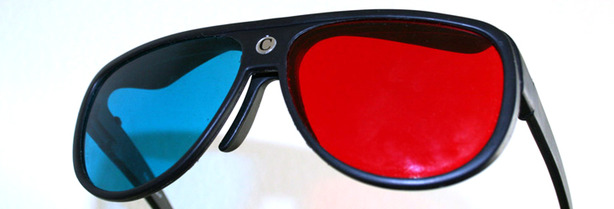
Nvidia GeForce 3D Vision and The History of 3D
Manufacturer: NvidiaGenuinely three dimensional films and games are something of a technological holy grail – the possibility of taking traditional forms of entertainment beyond the confines of a two dimensional screen in a way that everyone can easily use and enjoy is certainly tantalising enough to have drawn heavy investment from major electronics manufacturers and Hollywood studios alike.
3D Displays, no matter how niche and expensive, are currently on show at this week’s CES show in Las Vegas and James Cameron’s in production film, Avatar, has been shot entirely in Stereoscopic 3D.
While the technology and concept has always shown promise though, it’s only recently that 3D has started to mature into something fit for purpose. Memories of 1930s creature features presented in “terrifying 3D” relied on red and green cardboard glasses to create a painfully unconvincing effect.
The resurgent interest in 3D films in the 1950s and 1980s saw only a mild improvement with the switch to polarising lenses and dual strip film or dual projectors to generate a 3D effect over certain elements.
Neither effect was particularly convincing or successful. The older red and green filter technique (known as anaglyph), while requiring no specialist equipment to display and well suited to black and white movies, failed to translate to colour cinema. The newer polarising setups required specialist projection equipment and screens, making it useless for home displays.
Both formats were also disadvantaged by the use of standard camera equipment used to record the footage or, in the case of more modern attempts, the use of split lenses. While split lenses meant 3D films could be recorded to a single strip of film, saving on projection costs, the result was nowhere near as convincing as footage recorded using twin cameras and displayed using dual projectors, a process that was twice as expensive and unattractive to studios of the day.
So, while the idea of 3D entertainment has been with us for a while, genuine consumer 3D has remained unconvincing and clunky or prohibitively expensive. Sadly this hasn’t looked like changing for a while, with modern prototype displays pitched more at scientists, researchers and industry than consumers, and with the extortionate pricing to match.
In recent years though we’ve seen a few companies dip their toes into the pool of consumer 3D, with Zalman launching its Trimon 3D monitor a year or so back, a display that took a standard 2D display signal and converted it into a polarised 3D display. There have also been numerous types of dual-display 3D glasses, utilising tiny screens in each eye to create a 3D effect. Sadly though neither option has really caught on thanks to a combination of high cost, poor execution and limited compatibility and while memorable for their attempts at innovation, they’ve been consigned to the dustbin of history.
The problem is that quality convincing home 3D is nigh on impossible to achieve when the technology is converting an originally 2D image into a three dimensional representation. Because there’s no real information on an object’s depth, solutions have had to estimate depth, resulting in a answer which, in the case of Zalman’s Trimon, is easy to setup and applies to almost any 2D source, but is ultimately disappointing.
This is the reason that more recent 3D projects such as IMAX films are so much more convincing than previous attempts, as they’ve been recorded specifically in 3D using twin stereoscopic cameras, capturing the action onto two separate reels from two separate points of view and producing an image meant for 3D from the very start.

MSI MPG Velox 100R Chassis Review
October 14 2021 | 15:04










Want to comment? Please log in.